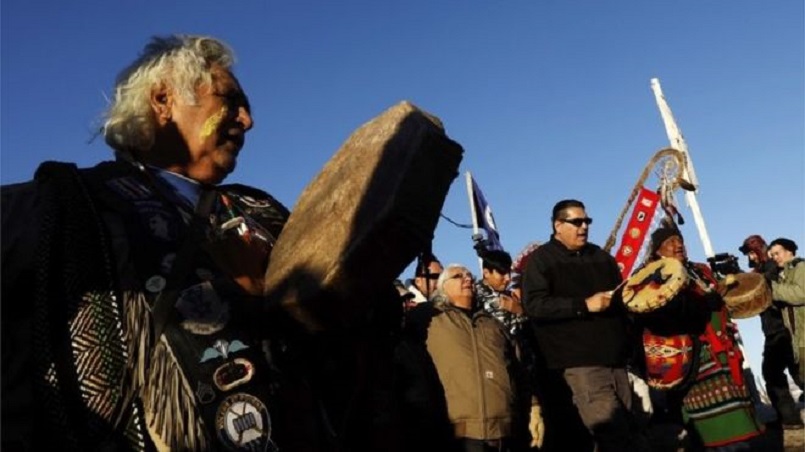
The US Army has decided not to allow an oil pipeline to cross under a reservoir on land it controls in North Dakota in a move praised by protesters.
The Standing Rock Sioux Tribe hailed an "historic decision" and said it was "forever grateful" to President Obama.
Instead, the US Army Corps of Engineers will look at alternative routes, a statement by the campaigners said.
The Sioux have been protesting since April against the pipeline which is near a reservation.
"Today, the US Army Corps of Engineers announced that it will not be granting the easement to cross Lake Oahe for the proposed Dakota Access Pipeline," the tribe's statement read.
"Instead, the Corps will be undertaking an environmental impact statement to look at possible alternative routes."
The multi-billion dollar pipeline, which runs close to the Standing Rock Sioux Native American Indian reservation, is nearly 1,200 miles (1,900km) long.
It is nearly complete except for the lake section.
The Dakota Pipeline stand-off explained
The Sioux, along with other Native Americans, oppose the pipeline because they fear it will contaminate drinking water and run over sacred burial sites.
Hundreds of US military veterans joined the activists last week. The campaigners, who have numbered thousands, have endured bitter temperatures and had been ordered to leave the area by Monday.
President-elect Donald Trump, who has had stocks in Texas-based Energy Transfer Partners, the project's builder, and Phillips 66, which owns one-quarter of the pipeline, has said he supports the project.
But he denies his policy is related to any financial interest.
North Dakota Governor Jack Dalrymple called the decision a "serious mistake".
North Dakota Republican Representative Kevin Cramer said the Army Corps' decision amounted to "a very chilling signal" for US infrastructure.
The protests, on federal land, have seen clashes between the demonstrators and law enforcement.
